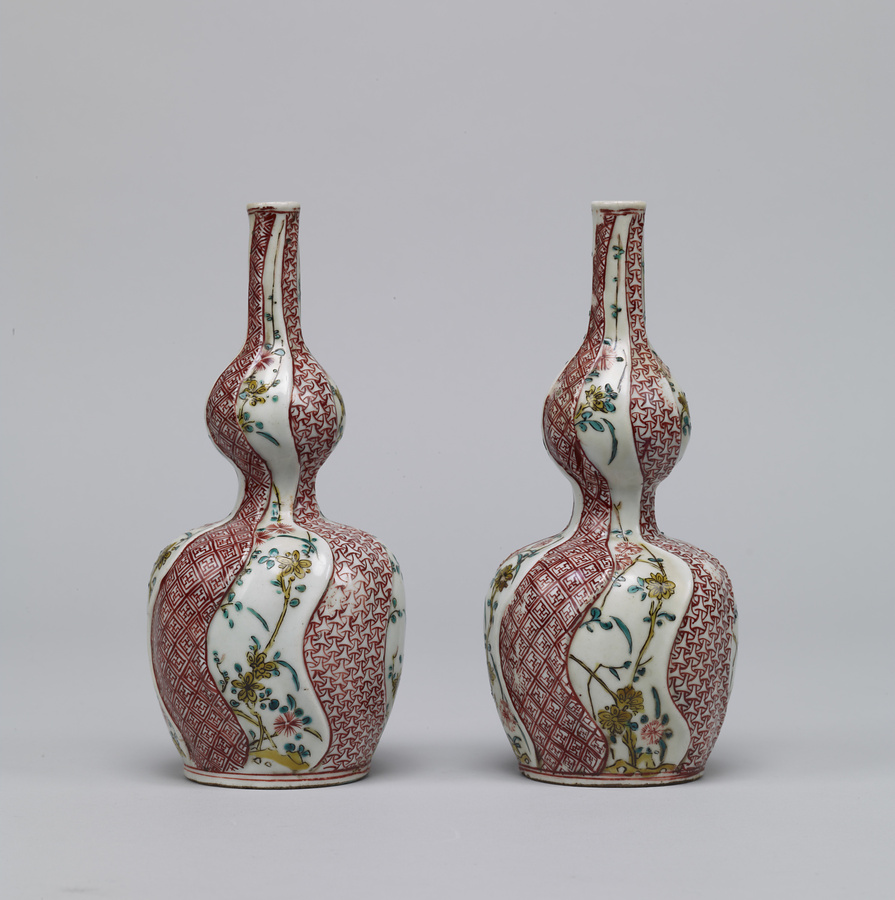色絵祥瑞文瓢形徳利
いろえしょんずいもんひさごがたとくり
概要
中国、明時代の終わり頃、16世紀~17世紀にかけて、中国のやきものの産地、景徳鎮(けいとくちん)では、日本で「古染付」(こそめつけ)と呼ばれた青い文様の磁器や、古染付に赤や緑の上絵付けを施した天啓赤絵(てんけいあかえ)と呼ばれる侘びた雰囲気のやきものがつくられ、日本にもたくさん輸出されました。
日本は安土桃山時代から江戸時代の初期、ちょうどお茶が流行しだした頃で、中国から輸入されたやきものたちは懐石(かいせき)の小皿や徳利、水指(みずさし)や香合として茶の湯の席で使われました。
なかでも生地が美しく、青の発色が濃く、丸や幾何学文様で器の表面を区切り、その中を細かい文様で埋めたタイプの茶の湯の器は、「祥瑞手」(しょんずいで)と呼ばれて人気があり日本からの注文制作と考えられています。
この作品は、その「祥瑞手」を手本として佐賀県・有田でつくられた伊万里焼の徳利です。型成形で瓢箪(ひょうたん)の形をつくり、曲線を生かして器面を縦に区切ったのち、華やかな赤や黄色の細かい文様を上絵付けで表すことから色絵祥瑞と呼ばれます。毘沙門亀甲(びしゃもんきっこう)と卍格子(まんじごうし)の細かい連続文様は中国伝来の吉祥文様。さらに、春の山吹と秋の撫子(なでしこ)を交互に表わして、季節感を器に盛り込んだところは、いかにも日本人の感性といえるかもしれません。

